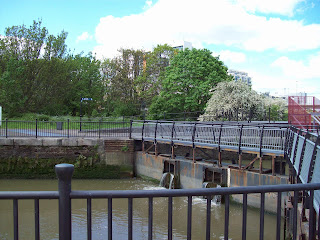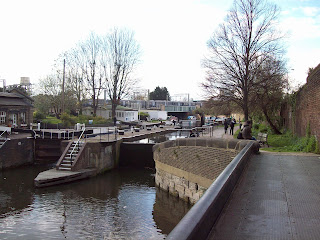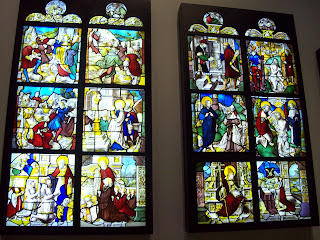Location: Hřebeny, Sokolov, Czech Republic
Hartenberg castle is a small ruined fortified estate in the western part of the Czech Republic, lying nestled and hidden within a heavily wooded valley. Near to the castle is the small village of Hřebeny, and further on is the town of Sokolov.
 |  |
This is the picture of which the castle, and its nearby brewery, lie within, a hilly landscape and entirely suitable one for the setting of a medieval castle. Also entirely suitable is the fact that the castle has a very interesting history in the region, even up to more recent times in the late 20th century.
The castle has a long history, stretching back to the 12th century when it was founded and its ownership had passed through the hands of many different noble families. Though little is known at this time by the author, the history of the castle contains conflicts, pillage, earthquakes and fires. The extents of what had occurred in the castle appears as an ever tragic spiral downward, culminating from 1945 when the owner at the time had been deported and the castle suffered from three major arson attacks during the period of 1985 to 1991.
The route to the castle itself is by a classic land-bridge, a small dirt track, with a steep slope on either side, making it difficult to approach the castle by any other route. From this bridge, one can also see the main chimney of the old brewery poking out from the tree-line in the valley.
As one approaches the castle, the first building one sees is the main tower of the castle with its newly reconstructed roof, complete with a 'crows nest' and domed shapes. The estate seems to stretch onwards, built up to form the rest of the castle over the top of an apparent graphite rich rock in these hills. Walking alongside these towering ruins, which is what most of the castle is at this time, one approaches the temporary gate, blocking the way to the main entrance. This entrance to the castle would have been an imposing archway with strong gates to block the way in to the castle.
However while the arch remains, much of its upper structure is ruins and the gates are long gone, broken and burnt from the castle's history in conflicts.
However while the arch remains, much of its upper structure is ruins and the gates are long gone, broken and burnt from the castle's history in conflicts.
Through this entrance, one ends up in the main courtyard of the castle, an open space surrounded by walls and the antithetical features of ruin and reconstruction. A stage sits at the south end of the courtyard, with a rudimentary 'throne' in the center. It appears as though it had been erected for events, while standing in front of the main estate, a towering building which stands as a stubborn ruin against the destruction wrought on it and against the elements.
The rest of the courtyard is surrounded by a motley of outhouses in either ruined or newly reconstructed in timber types. It gives the feeling of a location undergoing a state of rejuvenation after a 'fall' period of time. Apart from the stage, a small stables like building is undergoing reconstruction, as well as the erection of various other structures, most only half-complete. Throughout the courtyard area, one can find chickens and sheep milling around the area, going about their own ways as visitors to the castle come and go.
The estate building has two main entrances, one on the ground floor and one on the first floor, which is accessible from a wooden stairway on the outside of the building. In either case, one ends up being greeted by room after room of dust and rubble, with some of the rooms even lacking a ceiling.
Going through the ground floor entrance, one proceeds to walk through dark, cool rooms to find openings in the walls and other rooms without ceilings or walls. An eerie and illustrative experience, one gets the sense of abandonment in the maze of rooms one follows with barely a sense of direction.
Moving through the dark ground floor to the lighter upper floor, the extents of both the ruinous destruction of the castle and how far the reconstruction has gone, is revealed.
Moving through the upper floor towards the upper floor entrance, one comes across a gallery within the castle, with the bottom half taken up with displays of various artifacts and information boards on the history of the castle.
Some of these are the broken remains of plagues with Latin inscriptions, or old, worn statues. One particular piece of interest are the broken pieces of a column, found in the ruins of the chapel, set up for display in the gallery in the form that it was discovered in. On a floor above this gallery is the volunteer artwork gallery, based on the castle, as well as a selection of photographs of the volunteers who had come to the castle over the past years. One image stands out from this, one where the volunteers are posing with the flags of own nationalities.
Some of these are the broken remains of plagues with Latin inscriptions, or old, worn statues. One particular piece of interest are the broken pieces of a column, found in the ruins of the chapel, set up for display in the gallery in the form that it was discovered in. On a floor above this gallery is the volunteer artwork gallery, based on the castle, as well as a selection of photographs of the volunteers who had come to the castle over the past years. One image stands out from this, one where the volunteers are posing with the flags of own nationalities.
So to conclude, this sight within the pine covered hills of the western part of the Czech Republic, the Hartenberg Castle will take some time before it will be completed, potentially many years to come, though good progress had been made in the restoration of the castle. Even now it offers a slightly different kind of visit, alike to visits of old ruins and places in various states of decay.





















































